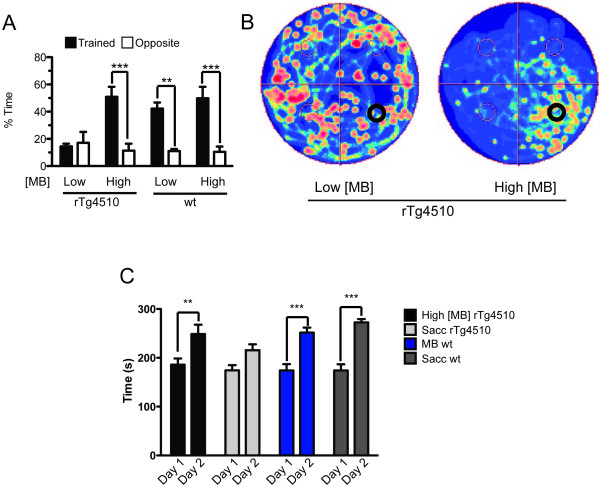Figure 7.
High concentrations of MB repair spatial and motor memory deficits. (A) (A)Post-hoc analyses reveal that High [MB] rTg4510 mice (n = 5) perform similar to wild-type MB treated mice, while Low [MB] rTg4510 mice (n = 4) did not display memory retention. Wildtype mice performed similarly regardless of MB (F(7,30) = 10.64, p < 0.0001), **p < 0.01, ***p < 0.001. (B) Camera tracking software imaging of MB treated rTg4510 mice divided by low and high parenchymal MB concentrations. (C) Motor learning was assessed by comparing the average latency to fall from the rotorod apparatus of day 1 with the average of day 2. High [MB] rTg4510 mice (n = 5) learn better than saccharine treated rTg4510 (n = 10). Wildtype groups, n = 10, **p < 0.01, ***p < 0.001.

